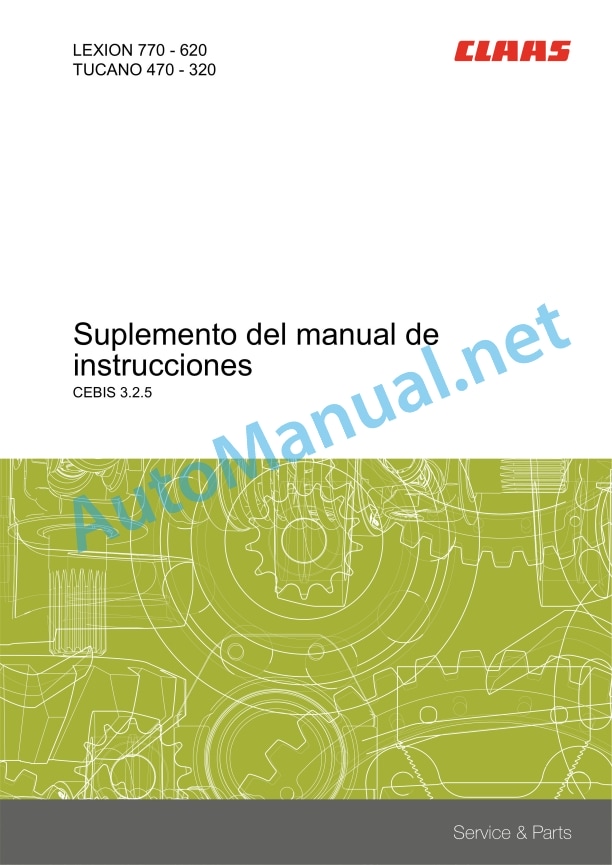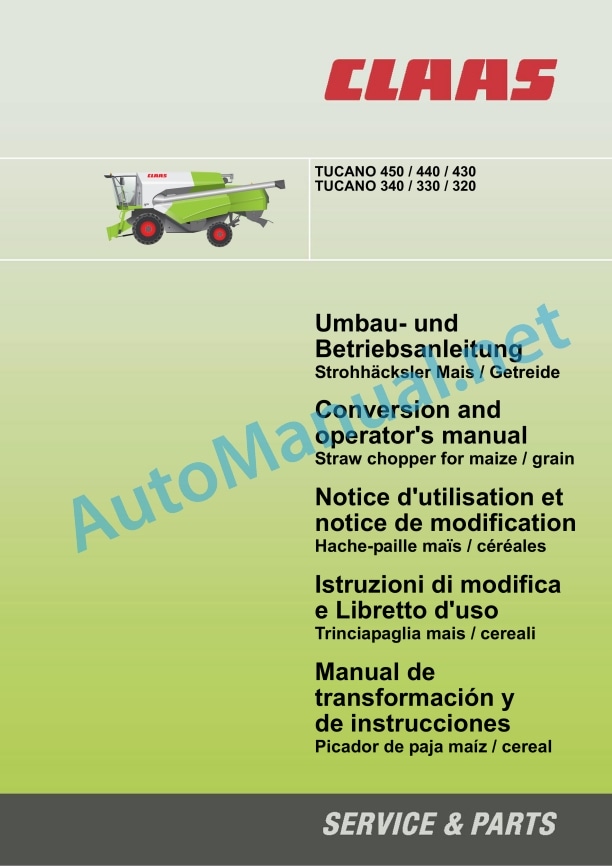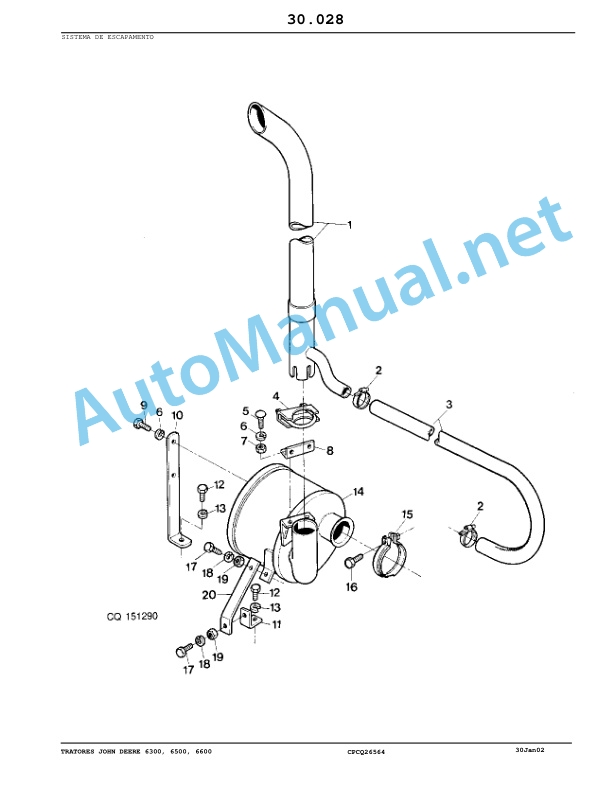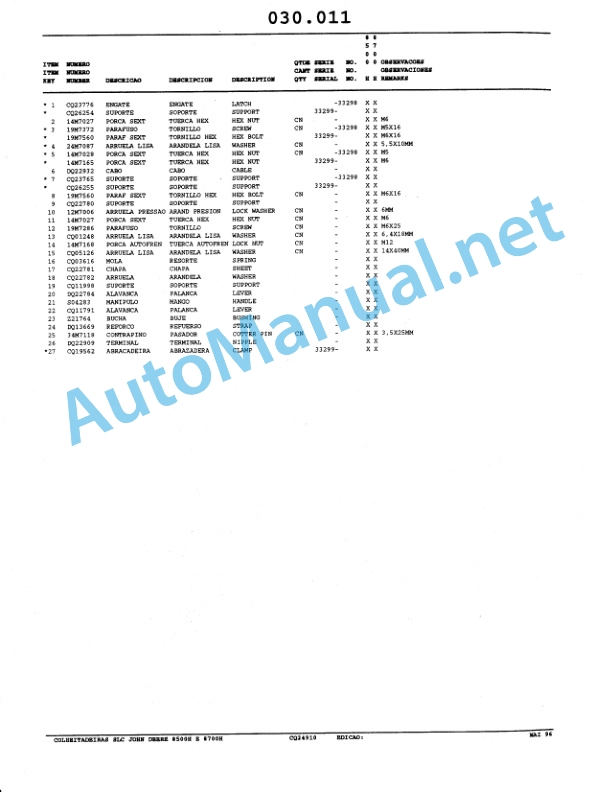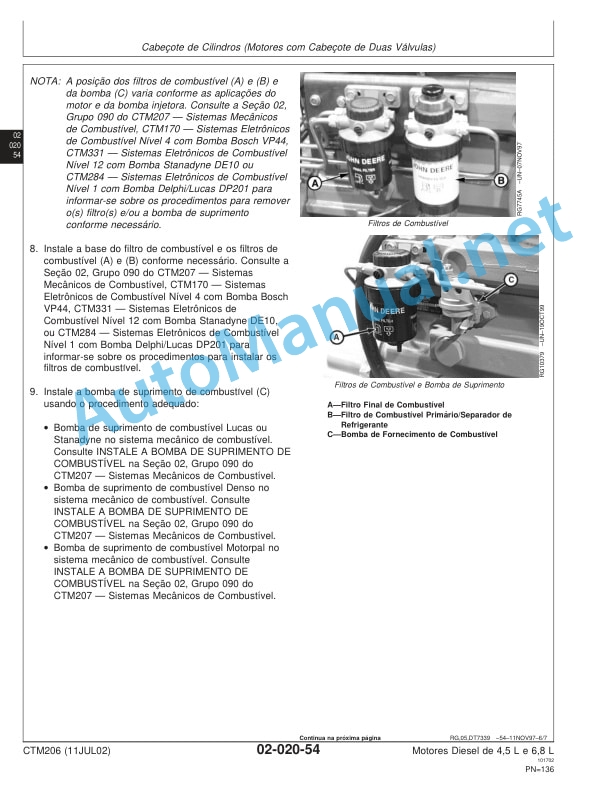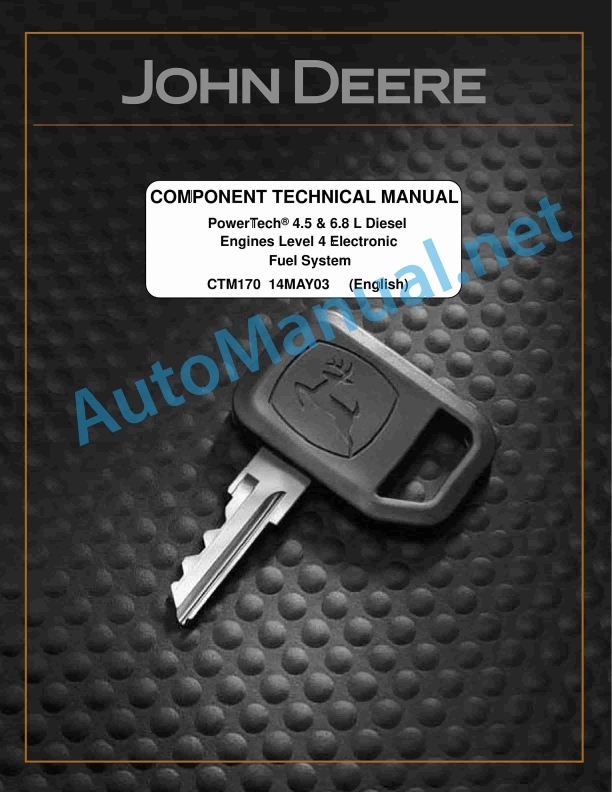Claas Tucano 430-420 (838) Combines Operator Manual ES
$50.00
- Model: Tucano 430-420 (838) Combines
- Type Of Manual: Operator Manual
- Language: ES
- Format: PDF(s)
- Size: 58.0 MB
File List:
00 0291 841 3.pdf
00 0292 680 0.pdf
00 0294 822 9.pdf
00 0295 425 1.pdf
00 0301 730 0.pdf
00 0291 841 3.pdf:
TUCANO 470 – 320
1 Regarding this instruction manual
1.1 General data
1.1.1 General instructions
1.1.2 Validity of the manual
1.1.3 Handling of the manual
1.1.4 Symbols and indications
1.1.5 Machine equipment
1.1.6 Technical instructions
2 Security
2.1 Safety instructions on the machine
2.1.1 Deposit the material / deposit the straw
2.1.2 Graphic danger symbols
3 Machine Description
3.1 Summary and operation
3.1.1 Engine summary
4 Control and display instruments
4.1 Driver’s cabin/platform
4.1.1 Central clock
4.2 On-board computer / display devices
4.2.1 Running screen summary
5 Technical data
5.1 TUCANO 470 / 450 / 440 / 430 / 340 / 320 – type 840 / 839 / 838 / 834 / 832
5.1.1 Engine
5.1.2 Electrical/electronic installation
5.1.3 Weights of mounting parts/machine body
6 Preparation of the machine
6.1 Turn off the machine and secure it
6.1.1 Turn off the machine and secure it
6.2 Machine loading
6.2.1 Use stops
7 Management
7.1 General data
7.1.1 General warnings
7.2 Depositing the material / depositing the straw
7.2.1 Adjust the speed of the straw chopper (TUCANO 450 / 440 / 430 / 340 / 320, left drive)
Reduce the speed of the straw chopper
Increase the speed of the straw chopper
7.2.2 Straw chopper summary
7.2.3 Place the straw chopper in position to make rows
7.2.4 Place the straw chopper in chopping position
7.2.5 Adjusting the inclination (Special Cut spreader plate spreader)
8 Incident and solution
8.1 General data
8.1.1 General warnings
8.2 Driver’s cabin/platform
8.2.1 Base central electrical system
8.3 Electrical/electronic installation
8.3.1 Vehicle main fuse
8.3.2 Battery mounting position
8.3.3 Starting aid (12 V / 24 V)
Starting aid (12 V / 24 V)
Externally starting the diesel engine
9 Maintenance
9.1 General data
9.1.1 General warnings
9.1.2 Permitted fuels
9.1.3 Carbamide solution
Use of carbamide solution
Purity/regulation of carbamide solution
Storage of carbamide solution in tanks/containers
Characteristics of carbamide solution at high/low outside temperatures
9.1.4 Welding work on the combine
9.2 Inputs
9.2.1 Lubricants
9.3 Maintenance intervals
9.3.1 Every 10 hours of service or daily
9.3.2 Every 500 hours of service or annually
9.3.3 Every 1000 service hours or every 2 years
9.3.4 every 3 years
9.4 Engine
9.4.1 Clean the surroundings of the diesel engine
9.4.2 Refuel the machine with carbamide solution
9.4.3 Change the carbamide solution filter
9.5 Drives
9.5.1 General warnings
9.5.2 Adjust the drives
9.5.3 Adjust the belt (R26)
9.5.4 Remove the belt (R27)
9.5.5 Adjust the belt (R27)
9.5.6 Remove the belt (R53)
9.5.7 Install the belt (R53)
9.5.8 Adjust the belt (R53)
9.6 Attached parts, machine housing
9.6.1 Change the air filter of the pressurized air cleaning equipment
9.7 Greasing scheme
9.7.1 Grease points – 100 h left
9.7.2 Grease points – 500 h left
00 0292 680 0.pdf:
LEXION 770 – 620TUCANO 470 – 320
1 Regarding this instruction manual
1.1 General data
1.1.1 Validity of the manual
1.1.2 Symbols and indications
2 Control and display instruments
2.1 Driver’s cabin/platform
2.1.1 CEBIS dashboard
2.2 CEBIS on-board computer
2.2.1 CEBIS general instructions
2.2.2 Operation screen summary
2.2.3 Running screen summary
2.2.4 Harvest screen summary
2.2.5 CRUISE PILOT harvest screen summary
2.2.6 CEBIS direct menu summary
2.2.7 Take into account the CEBIS error code information
Take into account the type of error code information
Take into account the structure of the error code information
Turn off error code information
View alarm history
View active alarms
2.2.8 Indicator cell symbols
2.2.9 CEBIS direct menu
2.2.10 HOTKEY direct menu
2.2.11 Quick access menu
2.2.12 Main menu
2.2.13 Head Menu
2.2.14 Driving menu
2.2.15 AUTO PILOT Menu
2.2.16 Machine settings menu
2.2.17 Fruit settings menu
2.2.18 Counters Menu
2.2.19 Maintenance Menu
2.2.20 CEBIS Menu
00 0295 425 1.pdf:
1 Instructions
1.1 Allgemeine Hinweise
1.1.1 Handling of the connection
Text and Abbildungen
Gliederung mit Baugruppenstruktur
Suchen and Finden
Richtungsangaben
1.1.2 Instructions of the connection
1.1.3 Gültigkeit des Lieferumfangs
1.1.4 Strohhäckslerübersicht
2 Sicherheit
2.1 Beachten
2.1.1 Sonders on the beach
2.1.2 Kennzeichnung von Warn- und Gefahrenhiisen
3 Lieferumfang
3.1 Umbau von Getreide auf Mais
3.1.1 Nachrustsatz
3.1.2 Nachrustsatz
3.1.3 Nachrustsatz
4.1 Allgemeine Hinweise 4.1.1 Allgemeine Warnhinweise
4.2 Strohhäcksler auf But umrüsten
4.2.1 Lieferumfang controls
4.2.2 Strohleitblech ausbauen (Strohhäcksler mit Standardverteiler)
4.2.3 Schlegelmesser abschrauben (Getreide)
4.2.4 Schlegelmesser anschrauben (But)
4.2.5 Querschneide ausbauen (Strohhäcksler Standard)
4.2.6 Querschneide zurückstellen (Strohhäcksler Special Cut)
4.2.7 Automatic transmission (Strohhäcksler Standard)
4.2.8 Heightened zurückschwenken (Strohhäcksler Special Cut)
4.2.9 Winkelblech (Getreide) austauschen (Strohhäcksler Standard)
4.2.10 Strohleitblech einbauen (Strohhäcksler mit Standardverteiler)
4.2.11 Spritztuch mit Seitenteilen einbauen (But)
4.2.12 Strohhäcksler Antriebsdrehzahl ändern (But)
Strohhäcksler Standard bis Maschinen-Nr. …
Strohhäcksler Standard ab Maschi Strohhäcksler Special Cut
All the machines
4.2.13 Probelauf vorbereiten und durchführen
4.3 Strohhäcksler auf Getreide umrüsten
4.3.1 Machg
4.3.2 Strohhäcksler Antriebsdrehzahl ändern (Getreide)
Strohhäcksler Standard bis Maschinen-Nr. …
Strohhäcksler Standard ab Maschinen-Nr. … and Strohhäcksler Special Cut
All the machines
4.3.3 Spritztuch und Seitenteile ausbauen (Getreide)
4.3.4 Winkelblech (Getreide, Mais) (Strohhäcksler Standard)
4.3.5 Strohleitblech ausbauen (Strohhäcksler mit Standardverteiler)
4.3.6 Schlegelmesser abschrauben (But)
4.3.7 Schlegelmesser anschrauben (Getreide)
4.3.8 Querschneide einbauen (Strohhäcksler Standard)
4.3.9 Querschneide vorstellen (Strohhäcksler Special Cut)
4.3.10 General specifications (Strohhäcksler Standard)
4.3.11 Heightened loads (Strohhäcksler Special Cut)
4.3.12 Strohleitblech einbauen (Strohhäcksler mit Standardverteiler)
4.3.13 Probelauf vorberehren
5 Arbeitseinsatz
5.1 Allgemeine Hinweise
5.1.1 Allgemeine Warnhinweise
5.2 Gutablage / Strohablage
5.2.1 Querschneide einstellen (Strohhäcksler Standard)
5.ide einstellen (Strohhäcksler Special Cut)
5.2.3 General instructions (Strohhäcksler Standard)
5.2.4 Special Cut Slots (Strohhäcksler Special Cut)
1 Introduction
1.1 General Information
1.1.1 How to use this manual
Texts and figures
Document structure based on subassemblies
Search and find
Directions
1.1.2 Validity of instructions
1.1.3 Validity of shipping package
1.1.4 Straw chopper overview
2 Safety precautions
2.1 Important
2.1.1 Important information
2.1.2 Identification of warning and danger signs
3 Package list
3.1 Conversion from grain to maize
3.1.1 Supplementary kit
3.1.2 Supplementary kit
3.1.3 Supplementary kit
4 Conversion
4.1 General Information
4.1.1 General warnings
4.2 Converting the straw chopper to maize
4.2.1 Checkpping package
4.2.2 Removing the straw guide plate (straw chopper with standard spreader)
4.2.3 Unscrew the free-swinging knives (grain)
4.2.4 Fitting the free-swinging knives (ma)
4.2.5 Removing the cross blade (standard straw chopper)
4.2.6 Resetting the cross blade (Special Cut straw chopper)
4.2.7 Removing the stationary knives (standard straw chopper)
4.2.8 Folding back the stationary knives (Special Cut straw chopper)
4.2.9 Replacing the angle plate (grain) (standard straw chopper)
4.2.10 Installing the straw guide plate (straw chopper with standard spreader)
4.2.11 Installing the deflector curtain with side elements (maize)
4.2.12 Changing the straw chopper drive speed (maize)
Standard straw chopper up to serial no. …
Standard straw chopper from serial no. … and Special Cut straw chopper
All machines
4.2.13 Prepare and carry out a test run
4.3 Converting the straw chopper to grain
4.3.1 Putting the machine out of action
4.3.2 Changing the straw chopper drive speed (grain)
Standard straw chopper up to serial no. …
Standard straw chopper from serial no. … and Special Cut straw chopper
All machines
4.3.3 Removing the deflector curtain and the side elements (grain)
4.3.4 Angle plate (grain, maize) (standard straw chopper)
4.3.5 Removing the straw guide plate (straw chopper with standard spreader)
4.3.6 Removing the free-swinging knives (maize)
4.3.7 Fitting the free-swinging knives (grain)
4.3.8 Installing the cross blade (standard straw chopper)
4.3.9 Setting the cross blade forward (Special Cut straw chopper)
4.3.10 Installing the stationary knives (standard straw chopper)
4.3.11 Folding the stationary knives forward (Special Cut straw chopper)
4.3.12 Installing the straw guide plate (straw chopper with standard spreader)
4.3.13 Prepare and carry out a test run
5 Fieldwork
5.1 General Information
5.1.1 General warnings
5.2 Crop receptacle / straw receptacle
5.2.1 Adjusting the cross blade (standard straw chopper)
5.2.2 Adjusting the cross blade (Special Cut straw chopper)
5.2.3 Adjust the stationary knives (standard straw chopper)
5.2.4 Adjusting the stationary knives (Special Cut straw chopper)
1 Introduction
1.1 General advice
1.1.1 Use of the instructions
Texts and illustrations
Classification by module structure
Seek and find
Directions
1.1.2 Validity of the notice
1.1.3 Validity of the parts provided
1.1.4 Overview of straw choppers
2 Safety Tips
2.1 Observe
2.1.1 Important
2.1.2 Marking of warnings and dangers
3 pieces supplied
3.1 Modification to move from cereals to corn
3.1.1 Retrofit clearance
3.1.2 Retrofit clearance
3.1.3 Retrofit clearance
4 Editing the edit
4.1 General advice
4.1.1 General safety advice
4.2 Modify the straw chopper to switch to corn
4.2.1 Check the parts provided
4.2.2 Remove the straw guide plate (straw chopper with standard distributor)
4.2.3 Unscrew the articulated knives (cereals)
4.2.4 Screw in the articulated knives (corn)
4.2.5 Remove the cross blade (standard straw chopper)
4.2.6 Retract the cross blade (Special Cut straw chopper)
4.2.7 Remove the counter-knives (standard straw chopper)
4.2.8 Pivot the counter-knives backwards (Special Cut straw chopper)
4.2.9 Replace the angle iron (cereals) (standard straw chopper)
4.2.10 Install the straw guide plate (straw chopper with standard distributor)
4.2.11 Install the anti-splash fabric with the side parts (corn)
4.2.12 Change the training regime of the straw chopper (corn)
Standard straw chopper up to machine No.
Standard straw chopper from machine No. … and Special Cut straw chopper
All machines
4.2.13 Prepare a test operation and carry it out
4.3 Modify the straw chopper for cereals
4.3.1 Turn off the machine
4.3.2 Change the training regime of the straw chopper (cereals)
Standard straw chopper up to machine No.
Standard straw chopper from machine No. … and Special Cut straw chopper
All machines
4.3.3 Remove the anti-splash fabric and the side pieces (cereals)
4.3.4 Angle iron (cereals, corn) (standard straw chopper)
4.3.5 Remove the straw guide plate (straw chopper with standard distributor)
4.3.6 Unscrew the articulated knives (corn)
4.3.7 Screw in the articulated knives (cereals)
4.3.8 Install the cross blade (standard straw chopper)
4.3.9 Advance the cross blade (Special Cut straw chopper)
4.3.10 Install the counter-knives (standard straw chopper)
4.3.11 Pivot the counter-knives forward (Special Cut straw chopper)
4.3.12 Install the straw guide plate (straw chopper with standard distributor)
4.3.13 Prepare a test operation and carry it out
5.1 General advice
5.1.1 General safety advice
5.2 Deposit of harvested product / deposit of straw
5.2.1 Adjust the cross blade (standard straw chopper)
5.2.2 Adjusting the cross blade (Special Cut straw chopper)
5.2.3 Adjust the counterblade (standard straw chopper)
5.2.4 Adjust the counter-knives (Special Cut straw chopper)
1 Introduction
1.1 General information
1.1.1 Application of the user manual
Testi e figure
Order by which the structure of the group is structured
Here and there
Directions information
1.1.2 Validity of the user manual
1.1.3 Validity of the supply package
1.1.4 View from inside the trinciapaglia
2 Sicurezza
2.1 How to operate
2.1.1 Important warnings
2.1.2 Warning and warning signal
3 Complessivo di fornitura
3.1 Modification of the corn grain
3.1.1 Improvement kit
3.1.2 Improvement kit
3.1.3 Improvement kit
4 Change
4.1 General information
4.1.1 General warnings
4.2 Transformation of trinciapaglia per mais
4.2.1 Check the component of the device
4.2.2 Show the blade to guide the blade (Trinciapaglia with standard blades)
4.2.3 Save the batten blade (cereal)
4.2.4 Avvitare the batten blade (but)
4.2.5 Smontaggio della mama transversele (standard trinciapaglia)
4.2.6 Arretramento de la miera transversele (trinciapaglia Special Cut)
4.2.7 Smontaggio delle controlame (standard trinciapaglia)
4.2.8 Ribbon all’indietro delle controle (Trinciapaglia Special Cut)
4.2.9 Sostituzione d’angolare lamiera (cereal) (standard trinciapaglia)
4.2.10 Guide rail guide (Trinciapaglia with standard equipment)
4.2.11 Montaggio del telo in gomma con le parti laterali (but)
4.2.12 Change the transmission number of the transmission (but)
Trinciapaglia standard fino alla macchina Nr. …
Standard trinciapaglia from the machine Nr. … and Special Cut trinciapaglia
Shut up the machine
4.2.13 Preparation and preparation for operation
4.3 Modify the cereal trinciapaglia
4.3.1 Please allow the machine to be used
4.3.2 Variation of the transmission number of the trinket (cereal)
Trinciapaglia standard fino alla macchina Nr. …
Sndard trinciapaglia from the machine Nr. … and Special Cut trinciapaglia
Shut up the machine
4.3.3 Show the grain and side particles (cereals)
4.3.4 Lamiera angolare (cereal, cor (standard trinciapaglia)
4.3.5 Show the blade to guide the blade (Trinciapaglia with standard blades)
4.3.6 Svitare the batten blade (but)
4.3.7 Add the battered blade (cereal)
4.3.8 Montaggio della mama transversale (standard trinciapaglia)
4.3.9 Posting in front of the cross blade (special cut trinciapaglia)
4.3.10 Montaggio delle controlame (standard trinciapaglia)
4.3.11 Ribbing in front of the control blade (Trinciapaglia Special Cut)
4.3.12 Guide rail guide (Trinciapaglia with standard equipment)
4.3.13 Preparation and preparation for operation
5 Practical use on the field
5.1 General information
5.1.1 General warnings
5.2 Product Deposit / Paglia Deposit
5.2.1 Registration of the cross lama (standard trinciapaglia)
5.2.2 Register the cross lama (Trinciapaglia Special Cut)
5.2.3 Controller registration (standard trinciapaglia)
5.2.4 Control blade registration (Special Cut trinket)
1 Introduction
1.1 General information
1.1.1 Using the instructions
Texts and figures
Construction with the construction of construction groups
Buscar y encontrar
Directional indications
1.1.2 Validate the instructions
1.1.3 Validate the suministro set
1.1.4 Sumario del picador de paja
2 Safety meds
2.1 Observer
2.1.1 Especially important
2.1.2 Signaling warnings and warnings
3 Suministro Set
3.1 Cereal to corn processing
3.1.1 Rear mounting game
3.1.2 Rear mounting game
3.1.3 Rear mounting game
4 Transformation
4.1 General information
4.1.1 General warnings
4.2 Modify the corn paddle picker
4.2.1 Checking the suministro set
4.2.2 Remove the paja guide cover (paja pin with standard distributor)
4.2.3 Destornillar las cuchillas picadoras (cereal)
4.2.4 Stirring the picadora knives (corn)
4.2.5 Remove the transverse cuchilla (standard paddle picker)
4.2.6 Place the transversal cuchilla at the side (Special Cut Paja Picador)
4.2.7 Remove the contracuchillas (standard paddle picker)
4.2.8 Put the contracuchillas in place (Special Cut pajamas picador)
4.2.9 Replace the chapa (cereal) angle (standard grain picador)
4.2.10 Install the paja guide cover (paja pin with standard distributor)
4.2.11 Montar london peto with the side pieces (maize)
4.2.12 Modifying the rotational speed of the rice cooker (corn)
Picador de paja estándar hasta la máquina nr. …
Picador de paja estándar de la máquina nr. … and picador de paja Special Cut
All the machines
4.2.13 Prepare and carry out a preview of the operation
4.3 Transform the picador from rice to cereal
4.3.1 Position the machine for service
4.3.2 Changing the rotation rate of the grain harvester (cereal)
Picador de paja estándar hasta la máquina nr. …
Picador de paja estánla máquina nr. … and picador de paja Special Cut
All the machines
4.3.3 Remove the loaf and side pieces (cereal)
4.3.4 Angulo de chapa (cereal, corn) (picador de paja standard)
Remove the paja guide cover (paja pin with standard distributor)
4.3.6 Destornillar las cuchillas picadoras (corn)
4.3.7 Atornillar las cuchillas picadoras (cereal)
4.3.8 Mount the transverse cuchilla (standard paddle picker)
4.3.9 Position the transverse cuchilla hacia delante (picador de paja Special Cut)
4.3.10 Montar las contracuchillas (picador de paja standard)
4.3.11 Place the contracuchillas hacia delante (picador de paja Special Cut)
4.3.12 Install the paja guide cover (paja pin with standard distributor)
4.3.13 Prepare and carry out a preview of the operation
5 Operational service
5.1 General information
5.1.1 General warnings
5.2 Deposit the material/deposit the paja
5.2.1 Adjust the transverse cuchilla (standard paddle picker)
5.2.2 Adjust the transvrse cuchilla (picador de paja Special Cut)
5.2.3 Adjust the contracuchillas (standard paddle picker)
5.2.4 Adjust the contracuchillas (Special Cut paddle picker)
00 0301 730 0.pdf:
IIIB diesel engines
1 Management
1.1 Diesel engine
1.1.1 Connect the diesel engine
EN – Connect the diesel engine
No relevant engine error (DTC) has been recognized
A relevant engine error (DTC) has been recognized
John Deere Parts Catalog PDF
John Deere Tractors 6300, 6500, and 6600 Parts Catalog CQ26564 (29SET05) Portuguese
John Deere Repair Technical Manual PDF
John Deere Repair Technical Manual PDF
John Deere Parts Catalog PDF
John Deere Harvesters 8500 and 8700 Parts Catalog CPCQ24910 Spanish
John Deere Repair Technical Manual PDF
John Deere DF Series 150 and 250 Transmissions (ANALOG) Component Technical Manual CTM147 05JUN98
John Deere Repair Technical Manual PDF
John Deere 16, 18, 20 and 24HP Onan Engines Component Technical Manual CTM2 (19APR90)
John Deere Repair Technical Manual PDF
John Deere Repair Technical Manual PDF
John Deere Repair Technical Manual PDF
John Deere Diesel Engines PowerTech 4.5L and 6.8L – Motor Base Technical Manual 07MAY08 Portuguese



